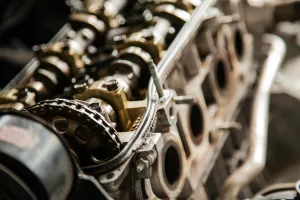Have you ever wondered about the relationship between your car’s speed and its fuel consumption? It’s a question that many drivers ponder, especially when trying to optimize fuel efficiency and reduce environmental impact. This comprehensive analysis delves deep into the nuances of how driving speed affects gas usage, exploring the intricate interplay between vehicle mechanics, aerodynamics, and engine efficiency. Whether you’re an automotive enthusiast, an environmental advocate, or simply a curious driver, this article provides insightful perspectives and practical advice on how to navigate the complex dynamics of speed and fuel consumption for a more sustainable and cost-effective driving experience. Understanding Fuel Consumption in Automobiles Fuel consumption in vehicles is a measure of how much fuel a car uses to travel a certain distance. It’s often expressed in liters per 100 kilometers (L/100km) or miles per gallon (mpg). Several factors influence a vehicle’s fuel consumption, including engine efficiency, vehicle weight, aerodynamics, and driving behavior.
The Role of Engine Efficiency
An engine’s efficiency is determined by how well it converts the energy in fuel into mechanical power. Not all the energy from the fuel is used for propulsion; some is lost as heat, sound, and friction. The efficiency of an engine varies with its speed and load. Generally, engines have an optimal speed range where they operate most efficiently.
To put it into perspective, consider a marathon runner. They have a pace at which they can run most efficiently, conserving energy for the long haul. Similarly, car engines have a “sweet spot” where they perform best, typically achieved during steady cruising speeds on highways.
Impact of Vehicle Weight
The weight of a vehicle affects its fuel consumption because more energy is required to move a heavier object. This is why lighter vehicles tend to be more fuel-efficient than heavier ones. Imagine pushing a shopping cart versus a loaded wheelbarrow; the difference in effort is akin to what car engines experience when propelling vehicles of varying weights.
Practical Tip: Reduce unnecessary weight in your vehicle. Remove heavy items from the trunk and back seats when they aren’t needed. This simple action can improve your fuel efficiency.
Aerodynamics and Fuel Consumption
Aerodynamics plays a significant role in determining a vehicle’s fuel efficiency, especially at higher speeds. As a vehicle’s speed increases, the resistance from the air (drag) grows exponentially, requiring more power from the engine to maintain speed, thus increasing fuel consumption.
To visualize this, think about the effort required to walk against a strong wind. As the wind’s force increases, you expend more energy to move forward. This is precisely what your car experiences at higher speeds.
Real Example: The design of sports cars often incorporates sleek, aerodynamic shapes to minimize drag, boosting performance and efficiency. Conversely, vehicles with boxy shapes or roof racks experience increased drag.
The Relationship Between Speed and Fuel Efficiency
The question of whether driving faster burns more gas can be answered by examining the physics of automotive operation and fuel consumption. There are two primary ways that driving speed impacts fuel efficiency:
1. Engine Operation and Efficiency
At very low speeds, vehicles are generally less fuel-efficient because the engine operates below its optimal efficiency range. As speed increases, the engine efficiency improves up to a certain point. However, beyond this optimal speed, fuel efficiency begins to decline. This optimal point varies among vehicles but is typically found at moderate speeds. For many cars, this is around 50-60 mph (80-97 km/h). Beyond this range, the engine requires more fuel to overcome aerodynamic drag and maintain higher speeds.
Case Study: A study conducted by the U.S. Department of Energy found that for every 5 mph driven over 50 mph, drivers pay an additional $0.18 per gallon for gas. This starkly illustrates how quickly efficiency declines at higher speeds.
2. Aerodynamic Drag and Fuel Consumption
As speed increases, the force of aerodynamic drag rises exponentially. To counteract this drag and maintain speed, the engine must work harder, burning more fuel. This relationship between speed, drag, and fuel consumption is why fuel efficiency drops at higher speeds.
Practical Tip: You can improve aerodynamic efficiency by keeping windows closed at high speeds. Open windows increase drag, reducing fuel efficiency.
Experimental Data and Studies
Numerous studies and tests have demonstrated the relationship between speed and fuel consumption. Controlled tests, often conducted in automotive laboratories or using advanced simulation models, consistently show that fuel efficiency peaks at moderate speeds and declines as vehicles travel faster.
Statistical Insight: Data from the European Environment Agency indicates that reducing average speed by just 10 km/h can lead to fuel savings of up to 12%. This significant reduction underscores the importance of maintaining moderate driving speeds.
Practical Implications for Drivers
Understanding the speed-fuel consumption relationship can help drivers make more fuel-efficient choices. By maintaining moderate speeds, drivers can significantly reduce fuel consumption, lower driving costs, and decrease greenhouse gas emissions.
Step-by-Step Guidance:
- Plan Your Route: Use navigation apps to find routes that allow for steady, moderate-speed driving. Avoid routes with frequent stops or heavy traffic, which can decrease efficiency.
- Use Cruise Control: On highways, cruise control can help maintain a steady speed, optimizing fuel efficiency.
- Monitor Speed: Stay within the optimal speed range for your vehicle. This not only saves fuel but also reduces wear and tear on your car.
Vehicle Design and Fuel Efficiency
Automotive engineers continually strive to improve vehicle fuel efficiency. This includes designing engines that operate more efficiently across a wider range of speeds, improving aerodynamics to reduce drag, and reducing vehicle weight. The adoption of hybrid and electric vehicles also represents a shift towards more efficient transportation modes that are less affected by speed-related efficiency losses.
Innovative Example: The Toyota Prius utilizes a combination of a lightweight frame and aerodynamic body design to maximize fuel efficiency, achieving impressive mileage even at varying speeds. Its hybrid engine operates efficiently across a broad speed range, illustrating the potential of modern engineering.
Environmental Impact
The fuel consumption of vehicles has a direct impact on the environment. Burning gasoline or diesel releases carbon dioxide, a greenhouse gas that contributes to global warming. By optimizing driving speed and improving fuel efficiency, emissions can be significantly reduced, mitigating the environmental impact of driving.
Eco-Friendly Insight: According to the International Energy Agency, transportation accounts for nearly a quarter of global CO2 emissions. Small changes in driving habits, such as maintaining optimal speeds, can collectively lead to substantial environmental benefits.
Additional Tips for Maximizing Fuel Efficiency
- Regular Maintenance: Keeping your car well-maintained ensures it operates efficiently. Regular oil changes, air filter replacements, and tire pressure checks can all contribute to better fuel economy.
- Smart Acceleration: Avoid rapid acceleration and heavy braking. Smooth driving helps maintain engine efficiency and reduces fuel consumption.
- Carpooling: Sharing rides with others can significantly cut down on the number of vehicles on the road, reducing overall fuel consumption and emissions.
Common Mistakes and How to Avoid Them
- Mistake 1: Ignoring Tire Pressure: Under-inflated tires increase rolling resistance, leading to higher fuel consumption. Check tire pressure regularly and maintain it at the recommended levels.
- Mistake 2: Overloading: Carrying excess weight in your vehicle requires more energy for movement. Clear out unnecessary items to improve efficiency.
- Mistake 3: Aggressive Driving: Speeding and aggressive maneuvers not only waste fuel but also increase the risk of accidents. Adopt a calm and steady driving style.
The relationship between driving speed and fuel consumption is a nuanced one, where efficiency peaks at moderate speeds and decreases as vehicles move faster. This understanding is pivotal for drivers seeking to optimize fuel usage and for engineers designing the next generation of fuel-efficient vehicles. As the automotive industry evolves, the focus on reducing fuel consumption and emissions remains a key priority, underlining the importance of comprehensive knowledge and innovative solutions in this field. By making informed choices, drivers can contribute to a more sustainable future while enjoying the personal benefits of reduced fuel costs and enhanced vehicle performance.




